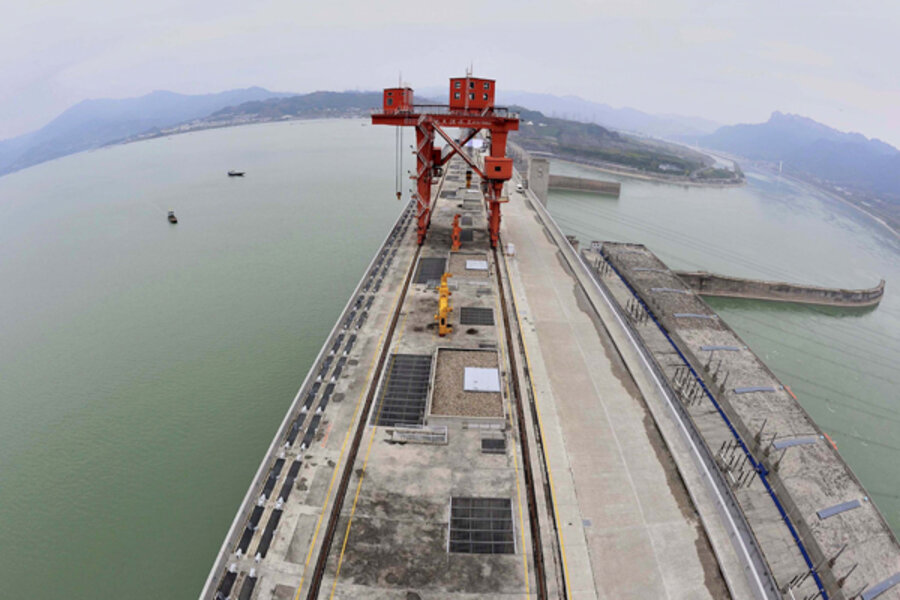Three Gorges Dam in China sees maximum water level
Loading...
| Beijing
Water rose to the maximum level at China's Three Gorges Dam on Tuesday, driving electricity output to full capacity at the world's largest hydropower plant for the first time since it began operating two years ago, its operator said.
That marks the culmination of the mammoth $23 billion project on the upper reaches of China's longest river, the Yangtze, touted by the government as the best way to end centuries of floods along the river basin and to provide energy to fuel the country's economic boom.
But the project has had major environmental impacts and its construction displaced more than 1.4 million people. Some geologists also warn that raising the water level of the vast reservoir carries a heightened risk of landslides, earthquakes and prolonged damage to the river's ecology.
Construction of the 410-mile (660-kilometer) -long reservoir began in 1993 and it began storing water in 2003, but the dam was only finished in 2006.
Its water level hit its peak height of 175 meters (574 feet) at 9 a.m. on Tuesday, according to project operator, the China Three Gorges Project Corp. The previous record was 172.8 meters (567 feet) set in 2008, the year the generators began operating.
Company chairman Cao Guangjing called it a "historical milestone." He said annual power generation will reach 84.7 billion kilowatt hours which would "enable the project to fulfill its functions of flood control, power generation, navigation and water diversion to the full."
To reach that level, dam officials had begun holding back water in September. The water level will be maintained at the current height for about two months and then be allowed to drop, the official Xinhua News Agency said. In the future, the water level will be kept between 145 meters (476 feet) and 175 meters (574 feet), depending on flood control needs.
But that could carry risks.
Last year, the Chinese investigative magazine Caijing revealed a government report that warned that rising water levels were increasing landslide risks by reviving old landslide fissures as the soil around the dam became more saturated and unsettled.
The report cited a pre-flood inspection report by local officials that identified nearly 700 areas vulnerable to geological damage, 587 of them possible landslide spots.
When reservoir officials attempted to raise the water levels last fall, at least one town near Chongqing had to evacuate dozens of residents after a 400-meter (1,300-foot) hairline crack appeared on the slopes above homes.
But hydrology expert Yan Echuan, part of an expert team hired by the government to assess geological risks of the project, said Tuesday he doesn't believe that keeping the water at the maximum level poses an increased danger since water levels have been as high as 172 meters (564 feet) in the past.
"Theoretically, there would be risks of landslides and even collapses," he said. "But it does not make too much difference if the water level is raised two or three meters from 172 to 175 meters. There's no substantive change in the local geological conditions," said Yan, a professor of hydrogeology at China University of Geosciences in Wuhan.
He said he was only aware of "one or two minor cases of earth-shifting" caused by the raised water level.





